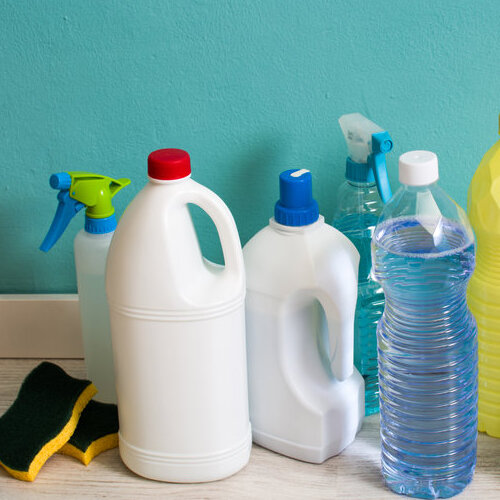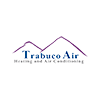
Cancerous Products
Multiple household products are linked to cancer. Here are some of the most common:
- Diethanolamine – otherwise known as DEA is an ingredient found in more than 600 home and personal care products. It is well known that in 1998 on a CBS morning talk show which revealed the findings of a study from the US Department of Health and Human Services’ National Toxicology Program that when humans come in contact with this ingredient that there was clear evidence of carcinogenic (causing or contributed to cancer) activity. On labels it is often listed as “Cocamide DEA”.
- Sodium Laureth Sulfate (SLS) and Sodium Laureth Sulfate (SLES)-The primary ingredients in most shampoos. They are used in formulations to degrease automobile engines and clean garage floors, because of their corrosive nature.
- Most hair conditioners are made of processed animal fats that degrease your hair and attract dirt.
- Propylene Glycol-A primary ingredient found in most skin moisturizers, which is the primary ingredient in brake fluid and antifreeze. It is used in skin products because it is a cheap way to ensure the lotion or cream feels silky and goes on smoothly. Surprisingly, I have also seen this same ingredient in the jars of readymade frosting and Toaster Strudels as well. My guess is that they are used in these products for the same reason (creamy feeling).
- Clinical studies reveal that your shampoo, conditioner, deodorant, skin creams and moisturizers could irritate your skin, corrode you hair, contribute to hair loss, prevent young eyes from developing properly; contribute to cataract development, form potentially carcinogenic compounds that enter your blood through your skin, which suffocates your skin, preventing your skin from detoxifying, thus in turn promotes aging and ill health!
If you want to learn more about how to improve indoor air quality in Corona, CA, check out Trabuco Air‘s HVAC services by calling (951) 268-7170.
Harmful Ingredients to Avoid in Cosmetics
Watch for these potentially damaging ingredients found in most personal care products:
- Propylene Glycol – Called a “humectant” in cosmetics, Propylene Glycol is really industrial antifreeze, and the major ingredient in brake and hydraulic fluid. Material Safety Data Sheets on Propylene Glycol warn to avoid skin contact as it penetrates into the system, and can cause liver and kidney damage.
- Mineral Oil Petroleum – Healthy skin needs to breathe and should not be inhibited. Mineral Oil or Petroleum (or Petrolatum) suffocates skin by coating it with an oily film. Holding moisture in the skin can ‘flood’ the cells, and may result in immature, unhealthy, sensitive skin that dries out easily.
- Aluminum – Irritates the skin and used as an “antiperspirant” in deodorant and believed to contribute to Alzheimer’s.
- Sodium Lauryl Sulfate (SLS) or Sodium Laureth Sulfate (SLES) – SLS or SLES can be the most harmful ingredient in personal-care products. SLS is used commercially as garage floor cleaner, engine degreaser and car wash soap, among other uses. Studies show its damage potential to be great when used in personal-care products. A study from the medical College of Georgia indicates that the effect of SLS is systemic. It can be retained in the eye, brain, heart, liver, etc., with potentially harmful, long-term effects. Other research has shown that SLS and SLES may cause potentially carcinogenic (cancer-causing) nitrates and dioxins to form shampoos and cleansers by reacting with commonly used ingredients found in many of these products. Both SLS and SLES, the alcohol form of SLS, can penetrate the skin and get into the blood. Large amounts of nitrates may enter the blood-stream from just one shampooing!
- Talc – is a considered a dry lubricant which makes your skin feel slippery, yet smooth, and yet is very similar to asbestos, a well-known cancer causing substance. Unfortunately talc is found in a lot of body and baby powders, feminine powders as well as many cosmetics.
- Alcohol – Did you know there is more alcohol in mouthwash than beer? Surprising, well, did you also know there was a link between mouth, tongue and/or throat cancer and mouthwashes that contain an alcohol content of 25% or higher? To further elaborate, the tissues in the mouth are more vulnerable to carcinogens, because alcohol acts as a solvent in the mouth.
- Bentonite or Kaolin – These are clays found in foundation products that can clog and suffocate the skin.
- Glycerin – draws moisture from inside the skin and holds it on the surface for a better feel, thus drying the skin from the inside out.
- AHA’s – Popular as an exfoliate (outer skin remover), this actually exposes fresh, young, immature cells that can easily be damaged by UV rays and other factors that can age the skin and cause wrinkles prematurely.
- High-Molecular Weight Collagen and Elastin – Both are derived from animal skins and ground up chicken feet. Both form films that can suffocate and over-moisturize the skin.
- Bar Soaps – bar soaps may corrode the skin and dry it out. They are usually made from animal fat and lye. Bacteria can feed and grow in them.
- Air Fresheners – interfere with your ability to smell by releasing a nerve-deadening agent. Known toxic chemicals found in an air freshener.
- Formaldehyde – Highly toxic, known carcinogen.
- Phenol – When phenol touches your skin, it can cause it to swell, burn, peel, and break out in hives. Even a small amount of this commonly known cleaning agent can cause cold sweats, convolutions, circulatory collapse, coma, and even death! At all costs, keep this chemical away from you and your loved ones.
- Ammonia – It is a very volatile chemical, it is very damaging to your eyes, respiratory tract and skin.
- Bleach – Strong corrosive which irritates the skin, eyes and respiratory tract. Vapors can cause fluid in the lungs which can cause coma or death? WARNING: Never mix bleach with ammonia or other acids, even vinegar, as the mixture causes DEADLY fumes.
- Perchloroethylene – Known carcinogen, damages liver, kidney and nervous system.
- Ammonium Hydroxide – Corrosive, extremely irritable to eyes, skin and respiratory passages.
Other Dangerous Chemicals and Products
Here are some other household chemicals and products that are harmful:
- Dishwasher Detergents – Most products contain chlorine in a dry form that is highly concentrated; and is the #1 cause of child poisoning (poison control center statistics).
- Drain Cleaners – Most drain cleaners contain lye, hydrochloric acid or trichloroethane.
- Trichloroethane – Eye and skin irritant, nervous system depressant; damages liver and kidneys.
- Nitrobenzene – This chemical, easily absorbed through skin, is extremely toxic. Known reaction to skin contact can cause skin discoloration, shallow breathing, vomiting and/or death. Repeated exposure can cause genetic changes, birth defects, cancer, liver, kidney, heart, and central nervous system damage. Remember, once this stuff is on your furniture it will continue to give off residual fumes.
- Mold & Mildew Cleaners – Most of these products are packaged in either a pump or aerosol spray. These are used to spread the product onto the surface with a fine mist. As you begin to work and breathe harder, these chemicals go deeply into your lungs. Some of the nasty chemicals that are contained within are as follows:
- Sodium hypochlorite – Corrosive, irritates or burns skin and eyes, causes fluid in the lungs which can lead to coma or death.
- Oven Cleaners – Next to drain cleaner, oven cleaners are some of the most toxic chemicals in your kitchen. If you read the label carefully you would probably be afraid to even pick up a can, let alone use it. Its lingering effects can sometimes be smelled days or even weeks after use. Not to mention that fine aromatic taste it leaves on your food after it comes out of your newly cleaned oven!
- Sodium or Potassium Hydroxide (Lye) – Caustic, strong irritant burns to both skin and eyes. Inhibits reflexes, will cause severe tissue damage if swallowed. These products come in aerosol spray containers. These sprays send thousands of tiny droplets of ammonia or lye, into the air that land on your skin or in your eyes, and of course they are easily inhaled. I’m not sure how you can clean your oven with these highly toxic substances without putting your head in the oven, so you might as well get a gas mask too!
- Laundry Room Products – Numerous products are used in our laundry rooms to clean our clothes, but what types of toxins are we using at the same time?
- Sodium or calcium hypocrite – Highly corrosive, irritates or burns skin, eyes or respiratory tract. May cause pulmonary edema, vomiting or coma if ingested. Contact with other chemicals may cause chlorine fumes which may be fatal.
- Linear alkylate sulfonate – Absorbed through the skin. It has been known to cause liver ailments in test animals at comparatively low dosages.
- Sodium tripoluphosphate – Irritates skin and mucous membranes. Causes vomiting. One of the problems with most of these chemicals is that they are absorbed through the skin. As we continue to wash our clothes in these products, residue builds up in the fibers. As we wear our clothing, these rub against our skin and these noxious chemicals are absorbed through the skin.
- Hydrochloric acid – Highly corrosive irritant to both skin and eyes. Damages kidneys and liver.
- Hydrochlorite Bleach – Corrosive, irritates or burns eyes, skin and respiratory tract. May cause fluid in the lungs leading to coma or death. Contact with acids causes fumes which may be fatal.
Call Today
Give Trabuco Air a call at (951) 268-7170 to learn more about how we can help with health and safety in the home and improve indoor air quality with our HVAC services in Corona, CA.

